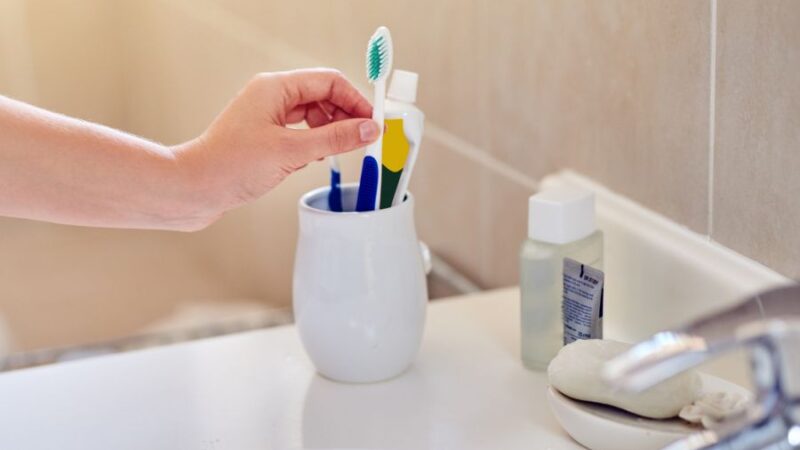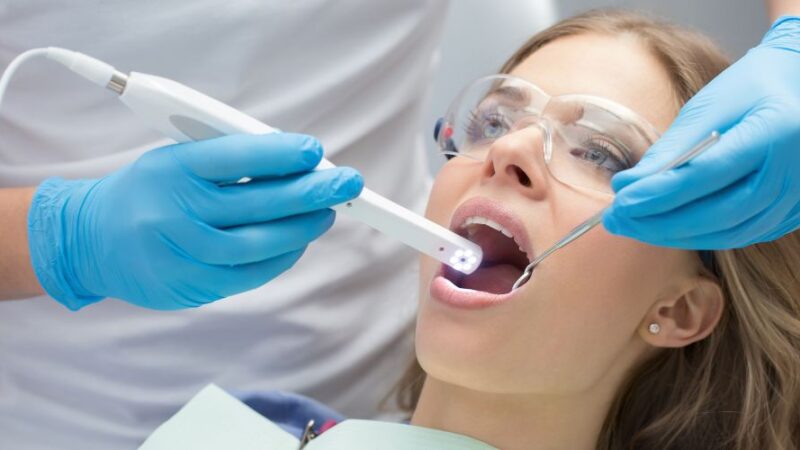Everything You Need to Know About Root Canal Treatment

Root Canal Treatment (RCT) is a dental procedure that often invokes a sense of apprehension in many. However, understanding what it involves, when necessary, and debunking common myths can alleviate some of the anxiety. In this comprehensive guide, we’ll explore the ins and outs of Root Canal Treatment, from its purpose to the steps involved, and provide insights into post-treatment care.
What is Root Canal Treatment?
Root Canal Treatment, commonly known as RCT, is a dental procedure designed to save and preserve an infected tooth with severe decay. The treatment involves the removal of the infected or damaged pulp, cleaning, and sealing the tooth to prevent further infection.
Signs and Symptoms that Indicate the Need for Root Canal Treatment (RCT)
Root Canal Treatment (RCT) is a dental procedure to save a tooth infected or severely decayed. Recognizing the signs and symptoms that indicate the need for RCT is crucial for seeking timely intervention and preserving dental health. Here are key indicators that suggest RCT may be necessary:
| Symptom | Description |
| Persistent Toothache | Sign: Intense and persistent pain in a specific tooth.Indication: Presence of infection or damage to the tooth’s pulp (inner tissue). |
| Heightened Sensitivity | Sign: Increased sensitivity to hot or cold temperatures.Indication: Sensitivity that lingers after removing the temperature stimulus may signal pulp inflammation. |
| Swelling in the Gums | Sign: Swelling or tenderness in the gums around a specific tooth.Indication: Inflammation or infection in the pulp may lead to localized swelling. |
| Abscess Formation | Sign: Formation of a pimple-like bump (abscess) on the gums.Indication: Accumulation of pus results from an infection that has spread to the surrounding tissues. |
| Discoloration of the Tooth | Sign: Change in the color of a tooth (usually darkening).Indication: Discoloration may occur due to pulp damage or death. |
| Pain During Chewing or Pressure | Sign: Pain when biting down or applying pressure to a specific tooth.Indication: This may suggest damage to the pulp or infection within the tooth. |
| Prolonged Pain After Stimuli | Sign: Pain lingers after exposure to hot, cold, or sweet stimuli.Indication: Prolonged discomfort indicates potential nerve or pulp involvement. |
| Cracked or Damaged Tooth | Sign: Visible cracks or damage to the tooth structure.Indication: Cracks can provide an entry point for bacteria, leading to pulp infection. |
| Pain After Dental Procedures | Sign: Discomfort or pain persisting after a dental filling or crown.Indication: Prior dental work may sometimes resolve underlying issues, necessitating further treatment like RCT. |
| X-ray Findings | Sign: Abnormalities detected in dental X-rays.Indication: X-rays reveal the tooth’s internal structure and can identify issues such as infection or damage to the pulp |
Root Canal Procedure: Step-by-Step Breakdown

Root Canal Treatment (RCT) is a dental procedure performed to save a tooth that has been infected or severely decayed. Despite its reputation, understanding the step-by-step process of RCT can help demystify the procedure and alleviate any apprehensions. Here’s a comprehensive breakdown of the Root Canal Procedure:
| Stage | Description |
| Initial Examination: | The dentist assesses the tooth’s condition through clinical examination and may use X-rays to determine the extent of damage. |
| Treatment Plan: | Based on the diagnosis, a treatment plan is developed. The decision to proceed with RCT depends on the severity of infection or decay. |
| Anesthesia and Access Opening: | Local Anesthesia: Administered to ensure the patient is comfortable and pain-free during the procedure. |
| Access Point: Once numb, a small access opening is created on the biting surface to reach the pulp chamber. | |
| Cleaning and Shaping the Canals: | Removal of Infected Pulp: Special instruments remove infected or damaged pulp from the pulp chamber and root canals. |
| Shaping the Canals: Canals are shaped using tiny files to create a space for the filling material. | |
| Irrigation and Disinfection: Canals are flushed with antimicrobial solutions to disinfect and eliminate remaining bacteria. | |
| Absence of Infection: Ensuring thorough disinfection reduces the risk of reinfection. | |
| Filling and Sealing: | Filling Material: Canals are filled with rubber-like gutta-percha material, sealing the space to prevent bacterial re-entry. |
| Sealing the Access Opening: The access opening is sealed with a temporary or permanent filling to protect the treated tooth. | |
| Post-Treatment Restoration: | Crown Placement: Often, a crown is placed on the treated tooth to restore strength and protect it from further damage. |
| Customized Crown: A customized crown is designed to match the natural tooth’s shape and color. | |
| Post-Treatment Care and Recovery: | Pain Management: Patients may be prescribed pain medications to manage any post-treatment discomfort. |
| Follow-up Appointments: Scheduled follow-up appointments are crucial to monitor healing, address concerns, and ensure treatment success |
Recommended: Best Alternative for Veneer Teeth
Post-Treatment Care and Recovery
Root Canal Treatment (RCT) is a dental procedure to save a tooth from infection or severe decay. While the procedure is essential for preserving oral health, post-treatment care and recovery play a crucial role in ensuring the success of the Root Canal Treatment. Here’s a comprehensive guide on what to expect and how to care for your tooth after undergoing RCT:
| Pain Management Strategies | Description |
| Prescribed Medications: | Your dentist may prescribe pain medications or recommend over-the-counter pain relievers to manage discomfort. |
| Follow Dosage Instructions: | Adhere to the prescribed dosage and frequency of pain medications as directed. |
| Avoid Chewing on the Treated Tooth: | Temporary Sensitivity: It’s common to experience temporary sensitivity after RCT. Avoid chewing on the treated tooth until your dentist confirms it’s safe. |
| Soft Diet: Opt for soft foods during the initial days to minimize stress on the treated tooth. | |
| Maintain Oral Hygiene: | Gentle Brushing and Flossing: Continue regular oral hygiene practices, but be gentle around the treated area to avoid irritation. |
| Antibacterial Mouthwash: Use an antibacterial or prescribed mouthwash to help keep the treated area clean. | |
| Attend Follow-Up Appointments: | Scheduled Check-ups: Attend all scheduled follow-up appointments with your dentist to monitor the healing process. |
| X-rays and Evaluation: X-rays may be taken to ensure the canals remain infection-free and the tooth is healing properly. | |
| Watch for Warning Signs: | Persistent Pain or Swelling: Contact your dentist promptly if you experience persistent pain, swelling, or any unusual symptoms. |
| Signs of Infection: Watch for signs of infection, such as increased redness, discharge, or a foul taste in the mouth. | |
| Consider a Permanent Restoration: | Discuss with Your Dentist: Consult your dentist about needing a permanent restoration, such as a dental crown, to protect the treated tooth. |
| Customized Crown: If recommended, a customized crown is designed to restore the tooth’s strength and functionality. | |
| Adhere to Oral Care Instructions: | Dentist’s Recommendations: Follow any specific oral care instructions provided by your dentist. |
| Oral Care Products: Use toothpaste and oral care products recommended or provided by your dentist. | |
| Report Any Changes: | Communication with Dentist: If you notice any changes in your oral health, including discomfort or changes in the treated tooth, communicate with your dentist promptly. |
| Open Dialogue: Maintain open communication with your dentist regarding any concerns or questions about your post-treatment care |
Recommended – Braces vs. Invisalign: Which is the Right Choice
Common Misconceptions About Root Canal Treatment (RCT)
Root Canal Treatment (RCT) often carries a stigma, surrounded by misconceptions that can contribute to anxiety or fear about the procedure. To dispel myths and provide clarity, let’s address some common misconceptions associated with Root Canal Treatment:

| Myth | Clarification |
| Root Canal Treatment is Painful | Modern techniques and local anesthesia ensure that Root Canal Treatment is generally no more painful than getting a dental filling. Patients often experience relief from the pain associated with the infected tooth after the procedure. |
| RCT Causes Illness or Systemic Health Issues | No scientific evidence supports the idea that Root Canal Treatment leads to systemic health problems. RCT is a localized procedure to treat infected or damaged teeth without impacting overall health. |
| Extraction is Always a Better Option | Saving natural teeth is preferable whenever possible. RCT allows for preserving a tooth, maintaining oral function, and preventing issues like misalignment resulting from tooth loss. |
| RCT Requires Multiple Appointments | While some cases may require multiple appointments, many RCT procedures can be completed in one visit. Advances in technology and techniques have streamlined the process. |
| RCT Results in Tooth Fracture | A tooth that undergoes proper Root Canal Treatment and receives a protective restoration, such as a crown, is not more prone to fractures. RCT helps preserve the tooth’s structure. |
| RCT is Only for Severe Pain | RCT is not only for cases of extreme pain. It is also recommended for teeth with deep decay, infection, or damage that may not exhibit severe pain initially. Regular dental check-ups help identify the need for RCT before severe symptoms occur. |
| Tooth Extraction is Quicker and Easier | While tooth extraction may seem quicker, the consequences of tooth loss, including potential misalignment and the need for replacements like implants or bridges, make RCT a preferable and conservative option. |
| RCT Causes Tooth Darkening | Tooth discoloration after RCT is uncommon and can often be addressed with teeth whitening procedures. The benefits of saving the natural tooth far outweigh the aesthetic concern of potential discoloration. |
| RCT is Not Effective in the Long Run | Root Canal Treatment has a high success rate. When performed by a skilled dentist and followed by proper aftercare, RCT can provide long-term benefits, preserving the treated tooth for years or even a lifetime |
In conclusion, understanding the purpose, process, and aftercare of Root Canal Treatment can empower individuals facing this dental procedure. Regular dental check-ups, prompt identification of symptoms, and seeking professional advice contribute to maintaining optimal oral health. Remember, Root Canal Treatment isn’t just about saving a tooth; it’s about preserving your smile and oral well-being.







2 thoughts on “Everything You Need to Know About Root Canal Treatment”